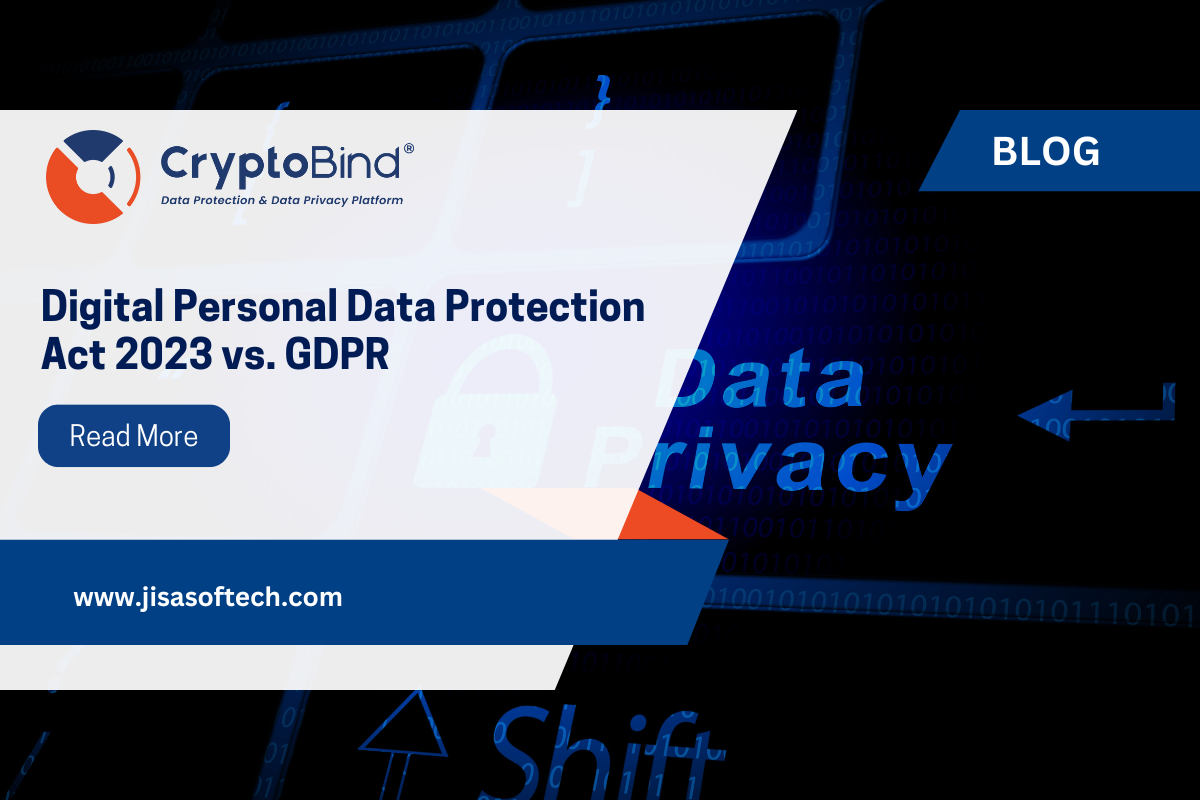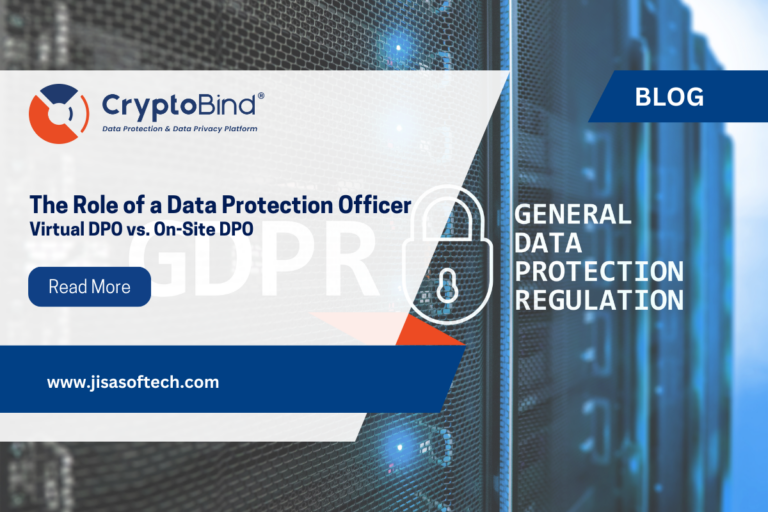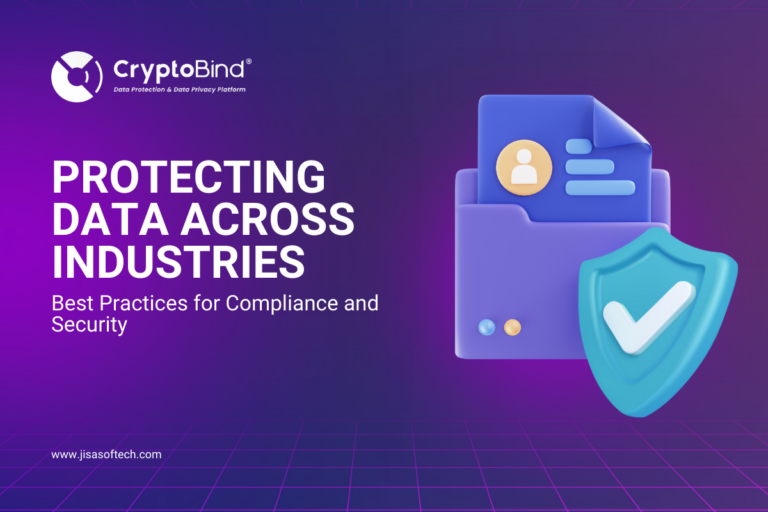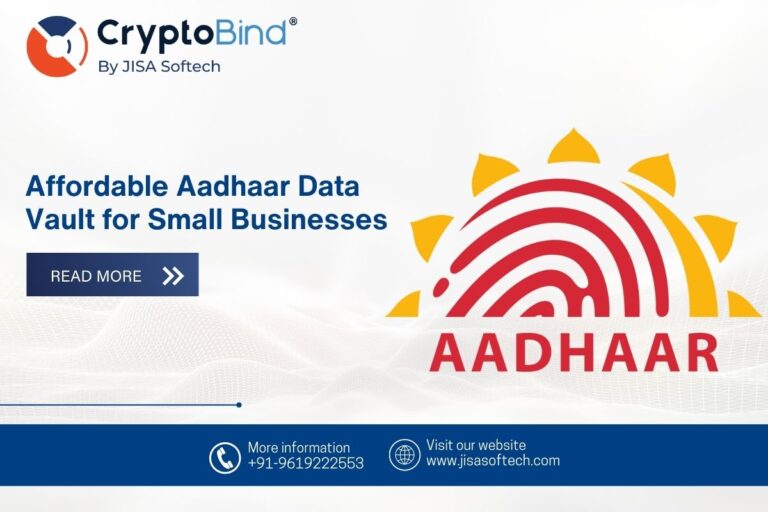Digital Personal Data Protection Act 2023 vs. GDPR: Key Similarities and Differences
The General Data Protection Regulation (GDPR) stands as a gold standard for data protection laws globally, setting stringent benchmarks for privacy and data security. Recently, India joined the league of countries with robust data protection frameworks by enacting the Digital Personal Data Protection Act (DPDP) 2023. This legislation marks a significant step in India’s data protection journey, aiming to balance global compliance with the nation’s unique socioeconomic landscape.
For organizations operating under both frameworks or navigating India’s new regime, understanding the similarities and differences between GDPR and DPDP is essential for compliance and strategic alignment. Let’s understand in detail.
GDPR Vs. DPDP Act:
Scope and Applicability
Both the GDPR and DPDP Act extend their jurisdiction beyond their geographical boundaries, targeting entities handling data of individuals within their territories or offering goods and services to their residents.
Key Differences:
- GDPR: Covers all forms of personal data, whether digital or non-digital, provided they are part of a structured filing system.
- DPDP Act: Limits its scope to digital personal data, including offline data digitized for processing, but excludes purely offline records.
Definitions and Categorization
- Personal Data:
GDPR categorizes data into general personal data and sensitive categories (e.g., health, religion, biometrics), with enhanced safeguards for the latter. DPDP lacks such categorization, applying uniform standards across all personal data types.
- Consent:
Both laws define consent as informed, specific, and affirmative. However, the DPDP Act introduces the term “unconditional” to emphasize user empowerment further.
Key Stakeholders
- Individuals:
Known as “Data Subjects” under GDPR and “Data Principals” in the DPDP Act, both frameworks prioritize individual rights over data. GDPR offers broader rights, such as data portability and resistance to automated decision-making, which are not explicitly provided under DPDP.
- Entities Processing Data:
- GDPR’s Data Controllers correspond to DPDP’s Data Fiduciaries, emphasizing trust and accountability.
- Both recognize Data Processors but differ in obligations—GDPR imposes direct responsibilities, while DPDP places compliance accountability on the fiduciary.
Grounds for Processing
GDPR offers multiple lawful bases for data processing, including legitimate interests and public interest. In contrast, the DPDP Act predominantly relies on consent, with exceptions like state functions, legal compliance, and emergencies. This narrower scope under DPDP prioritizes individual control but may restrict operational flexibility.
Innovative Features: Consent Managers
A unique aspect of the DPDP Act is the introduction of Consent Managers, entities facilitating transparent and efficient consent handling. This feature is absent in GDPR, reflecting India’s focus on user-centric mechanisms to ease compliance and data management.
Compliance and Obligations
- Notice Requirements:
GDPR mandates comprehensive notices for all data processing scenarios. The DPDP Act limits this obligation to consent-based processing, with the added requirement of providing notices in local languages to enhance accessibility.
- Breach Notifications:
GDPR requires breach reporting based on risk assessment, while DPDP mandates universal notification of breaches to the Data Protection Board and affected individuals, irrespective of severity.
Cross-Border Data Transfers
GDPR relies on adequacy decisions, contractual clauses, and binding corporate rules to regulate data transfers. The DPDP Act adopts a centralized approach, granting the Indian government authority to specify permissible countries, emphasizing sovereignty in data governance.
Children’s Data Protection
The GDPR offers a flexible age threshold for parental consent, ranging from 13 to 16 years. Conversely, the DPDP Act sets the age of consent uniformly at 18 years, mandating parental oversight and restricting practices like targeted advertising to children.
Penalties and Enforcement
Both frameworks impose stringent penalties for non-compliance, signaling serious consequences for data breaches and violations. GDPR’s tiered penalty structure is based on turnover percentages, while DPDP enforcement details remain to be fully disclosed but indicate a rigorous approach.
GDPR vs. DPDPA
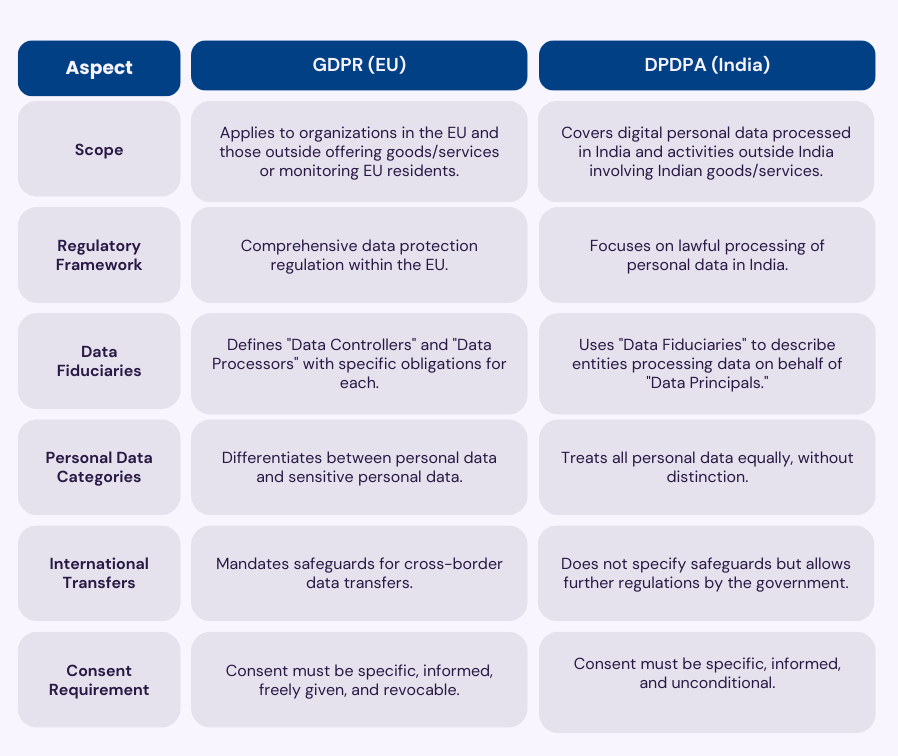
Summary
The GDPR and DPDP Act share foundational principles of safeguarding personal data and promoting accountability. However, the DPDP reflects India’s unique digital ecosystem, balancing global best practices with localized needs. Understanding their nuances enables organizations to tailor compliance strategies effectively, fostering trust and innovation in an increasingly data-driven world.
Ensure seamless compliance with the DPDP Act! Contact us today to learn how CryptoBind Solutions can simplify your data protection journey and keep your business secure.

